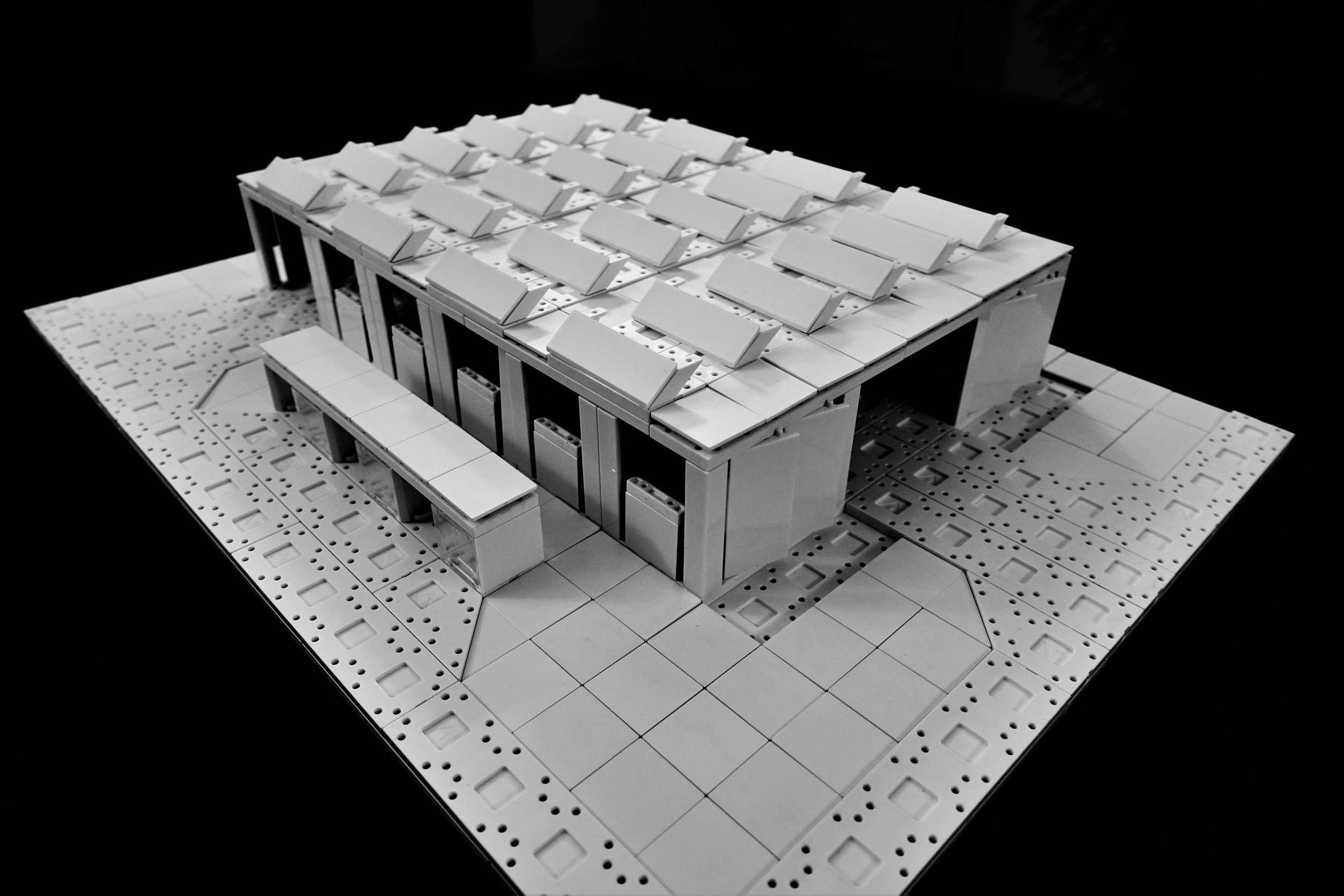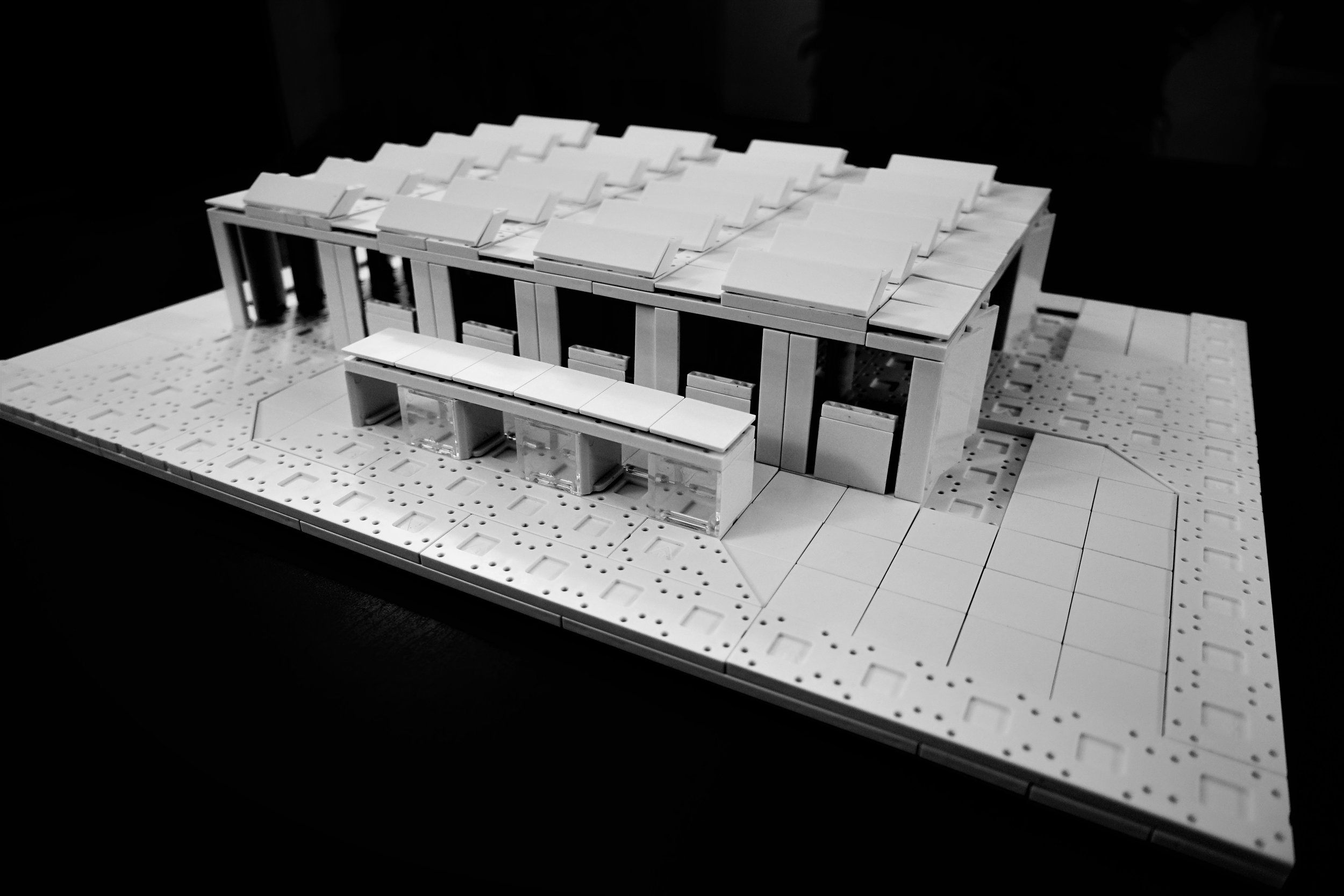Project Revive - Parking Solutions Competition
Featuring Sofie Rhoads and Ricky Fairhurst
“The problem with parking is that it isn’t going anywhere.”
The Prompt:
This is a submission to IPI's 2018 Parking Solutions Competition: Garage of the Future.
Parking is an essential element of the mobility equation—and the creation of “smart cities.” Parking, transportation, and real estate are linked and impact the others in myriad and complex ways. The urban landscape has changed rapidly due to demographics, demand for more livable places and communities, and trans-formative (and disruptive) technologies. In the face of all this change, parking structures will continue to play a critical role in our cities and towns – but the planning, design and construction will evolve. Therein lies our challenge, to address the form and function of the garage itself, and to craft more viable mobility solutions for the places we live, work, and play.
Design the garage of the future, with a 10 to 20 year outlook.
Project Overview:
South East view showing AV exit point and pickup/drop off station.
Project Revive is a modular panel-based system that aims to create a generic, self-sufficient, cost effective, modular building typology that can be applied to various residential and commercial applications and in this case, innovative parking solutions. Our proposal demonstrates how the parking garage of the future can easily adapt to disruptions and new market conditions while maintaining a return on investment through additional revenue-generating activities and strategic partnerships.
Adaptive Design:
South West view showing interior layout of AV charging bays.
We imagine a scalable system that can easily be sized to fit various sites and adjust to changes in their use over time. In years 0-10, our garage will provide parking spaces to “traditional” automobiles with human drivers that use both internal combustion engines and electric vehicles. Given the high capital costs, charging infrastructure will be built-up according to demand and seek to utilize existing state and local funding sources for electric vehicle supply equipment (EVSE). Over time, this design will gradually be modified to create more spaces for autonomous vehicles (AVs). We assume the transition from traditional automobiles to AV will be long even when these technologies become market feasible. Therefore, in years 10-20, Revive will begin to adapt to AVs and how they use space, including boarding, alighting, and the ability to be parked more tightly. The design can adapt to the AV market conditions depending on whether AVs are privately owned or if the majority are owned and operated by transportation network companies (TNCs) like Lyft or Uber. The year 20 model is shown in the images.
North East view showing interior layout of AV charging bays.
Cost Effective Construction and Revenue Streams:
South West view of pickup and drop off station.
Our vision recognizes that the traditional parking industry must change to meet market demand and identify new ways to generate revenue. Revive anticipates a future in which drivers become users. These users will simply order an AV through an app or a stationed kiosk, and a nearby, readily available AV will arrive shortly for pickup. This disruption has dramatic implications on the design and floor plans of parking garages, but it also opens new paths for garages to become something more.
Revive is designed to become a transit hub with mixed-use amenities that helps solve the first and last mile problem. A TNC rider could be dropped off at a Revive hub to catch adjacent transit. The TNC car parks then while it awaits its next rider, perhaps someone making the trip home from a nearby city on mass transit and needing a ride from the transit stop to their home. As Revive undergoes a retrofit process for AV, more space that was used on parking traditional cars can be converted to small shops. The gradual changes in technology demonstrate that although there is a need for parking, owners and operators must be agile to proactively plan for future revenue streams and necessary retrofits.
Smart Operations:
Interior close-up of charging bay showing structural support wall with integrated battery for simultaneous charging of up to 3 AVs in this configuration.
Project Revive is based on fully autonomous smart operations where developments in car and garage sensor technology allow for vehicle/hub communication. Smart signage is located at the pickup and drop off stations and allow users to see garage capacity and waiting times. Onsite energy generation and energy gained from piezo-electric systems are used to light up the structure during the evening and night to keep the area lit for safety. Motion sensors and security cameras ensure only authorized personal enter the garage. Payment can be accepted through the built in application or at the kiosk with options for monthly, yearly or need based ride sharing auto payment.
Garage interior facing west showing the effects of natural lighting with the automated sun louvers.
Sustainability:
North West view of roof mounted PV panels.
Revive is designed for sustainability, both in the way it is built and its impact on the environment. Sustainable design elements include PV panels, piezo-electrics and sun louvers. PV panels are both mounted on the rooftop and fitted in the surrounding sidewalks. Piezo-electric stages are a smart flooring solution set up in high vehicle traffic areas and sidewalks that collect the impact force of movement and convert it to electricity. The sun louvers on the west and east wall allow natural daylight to flood the interior space while blocking the heat from direct sunlight.
North West view of sun louvers.
South West view of sun louvers.
Revive supports high-quality mass transit and helps solve the first and last mile problem. It limits vehicle miles traveled (VMT) and emissions by encouraging AVs to park instead of operating as zero occupancy vehicles while waiting for the next riders. These benefits also extend to local governments and communities because removing empty vehicles from roads limits congestion and the cost of road damage.
Stakeholders and Partnerships:
Currently, there is much speculation about how AV will change traditional business models for automobile manufacturers, transportation departments, and the parking industry (amongst others). We believe that the parking industry should form strategic partnerships with these key stakeholders to assure that parking remains a part of the future transportation equation. There are many potential partners to choose from. Parking stakeholders could form partnerships with utility companies and charging infrastructure vendors to reduce capital and operation costs and utilize state and federal funding incentives for adding EVSE. Many states have climate, emissions, and zero-emissions vehicle initiatives, and Revive’s ability to add sufficient EVSE to the market will help them achieve these goals. Finally, Revive is a TNC hub that would allow riders to gather at a central location for shared rides while allowing unused AVs to park at the same hub instead of roaming for parking or riders. There is potential for TNC providers or the automobile manufacturers of the future to sign framework agreements that reserve parking for their vehicles at this high-volume, high visability hub. These contracts would offer them easy access to potential riders in the area and provide parking operators with a consistent source of revenue even in a changing market.
Photo Gallery:
Video Documentation:
About us:
Sofie Rhoads is a graduate student at the University of Maryland where she studies Community Planning and focuses on transportation. She is passionate about non-motorized transportation, creating safe cycling and pedestrian infrastructure, and the Philadelphia Flyers.
Rick Fairhurst (RikySongSu) is a designer and cinematographer interested in developing and documenting low impact architecture in developing countries, addressing the need for water, electricity and health to promote engaging and productive lifestyles.
The International Parking Institute (IPI) Parking Solutions Competition is a design and development challenge for college students. This competition is a chance for students to express their rendition of The Garage of the Future. IPI seeks to engage students in a challenging parking solutions exercise based on real-world scenarios.
Notes:
As always, if you have any questions, suggestions or comments, we would love to hear from you in the comments section below or through email to either rikysongsu@gmail.com or srhoads@umd.edu










